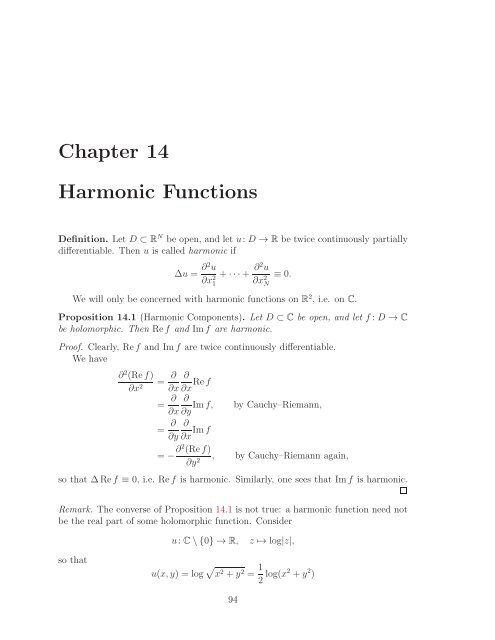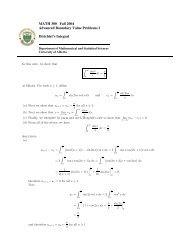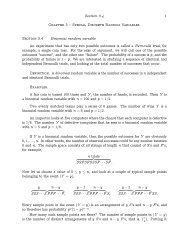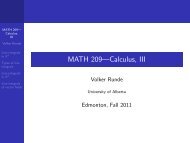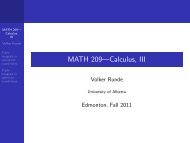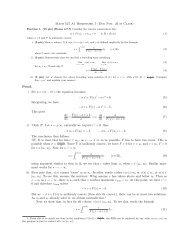Math 411: Honours Complex Variables - University of Alberta
Math 411: Honours Complex Variables - University of Alberta
Math 411: Honours Complex Variables - University of Alberta
Create successful ePaper yourself
Turn your PDF publications into a flip-book with our unique Google optimized e-Paper software.
Chapter 14<br />
Harmonic Functions<br />
Definition. Let D ⊂ R N be open, and let u: D → R be twice continuously partially<br />
differentiable. Then u is called harmonic if<br />
∆u = ∂2 u<br />
∂x 2 1<br />
+···+ ∂2 u<br />
∂x 2 N<br />
≡ 0.<br />
We will only be concerned with harmonic functions on R 2 , i.e. on C.<br />
Proposition 14.1 (Harmonic Components). Let D ⊂ C be open, and let f: D → C<br />
be holomorphic. Then Ref and Imf are harmonic.<br />
Pro<strong>of</strong>. Clearly, Ref and Imf are twice continuously differentiable.<br />
We have<br />
∂2 (Ref) ∂ ∂<br />
=<br />
∂x2 ∂x ∂x Ref<br />
= ∂ ∂<br />
Imf, by Cauchy–Riemann,<br />
∂x∂y<br />
= ∂ ∂<br />
∂y ∂x Imf<br />
= − ∂2 (Ref)<br />
∂y2 , by Cauchy–Riemann again,<br />
so that ∆Ref ≡ 0, i.e. Ref is harmonic. Similarly, one sees that Imf is harmonic.<br />
Remark. The converse <strong>of</strong> Proposition 14.1 is not true: a harmonic function need not<br />
be the real part <strong>of</strong> some holomorphic function. Consider<br />
so that<br />
u: C\{0} → R, z ↦→ log|z|,<br />
u(x,y) = log � x 2 +y 2 = 1<br />
2 log(x2 +y 2 )<br />
94


